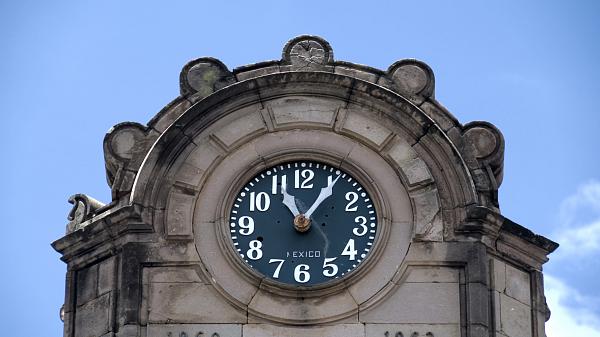Mexico One Hour Ahead on Easter, April 4, 2010
Many places in Mexico that will start daylight saving time on Sunday, April 4, 2010.

An old clock in Oaxaca, Mexico.
©iStockphoto.com/JamesHarrison
Most of Mexico will officially begin daylight saving time (DST) on Sunday, April 4, 2010, which is Easter Sunday. However, some of Mexico’s northern regions that border the United States will start DST at the same time as the United States and Canada.
The state of Sonora does not observe DST and remains on Mountain Standard Time (MST) all year round.
Mexico’s DST Schedule
Most of Mexico observes a daylight saving schedule that begins on the first Sunday of April, when the clocks move forward by one hour from 2am (or 02:00) to 3am (or 03:00) local time. The DST schedule ends on the last Sunday of October, when the clocks move back from 2am (or 02:00) to 1am (or 01:00) local time.
Some areas in northern Mexico that border the United States follow a slightly different daylight saving schedule. DST for these areas runs from the second Sunday of March until the first Sunday of November. This schedule applies to:
- Tijuana.
- Mexicali.
- Ciudad Juarez.
- Ojinaga.
- Ciudad Acuña.
- Piedras Negras.
- Anahuac.
- Nuevo Laredo.
- Reynosa.
- Matamoros.
The synchronized daylight saving schedule also applies to towns on the Mexico’s’ northern border between “the international line and the pipeline located at a distance of 20 kilometers (about 12 miles)". The revised DST arrangement also affects to the municipality of Ensenada in Baja California.
These areas follow the United States’ DST schedule as a way of maintaining strong business ties and economic relations between US/Mexico border cities and towns. Mexico’s Congress passed a law in December 2009 to ensure that the amended DST schedule for these areas would occur from 2010 onwards. Sonora does not observe DST so the time does not change there.
DST’s Advantage in Mexico
DST is applied in most of Mexico on a yearly basis to save energy by promoting the rational use of electricity. Many people in Mexico have access to electricity and live in urban areas, where peak electricity demand occurs after sunset. DST allows for extra hour of sunlight in the afternoon to counter peak electricity demand, in which more natural sunlight is used instead of artificial lighting.
Time Zones in Mexico
Mexico observes three different time zones:
- Central Standard Time (CST), which is six hours behind Coordinated Universal Time (UTC-6 hours), applies to most of the country including Mexico City. This region observes Central Daylight Time (CDT), which is UTC-5 hours, during daylight saving time.
- Mountain Standard Time (MST), or UTC-7 hours, applies to states such as Baja California Sur, Chihuahua, Nayarit, Sinaloa and Sonora. These areas, except Sonora, shift to Mountain Daylight Time (MDT), which is UTC-6 hours, during daylight saving time.
- Pacific Standard Time (PST), which is UTC-8 hours, is used in areas such as Tijuana and Baja California. These areas shift to Pacific Daylight Time (PDT), which is UTC-7 hours, during daylight saving time.
The islands, reefs, and cays that are part of Mexico observe the appropriate time zones allocated to them depending on their geographical location. Daylight saving time is referred to in Spanish as “horario estacional” or “horario de verano”.